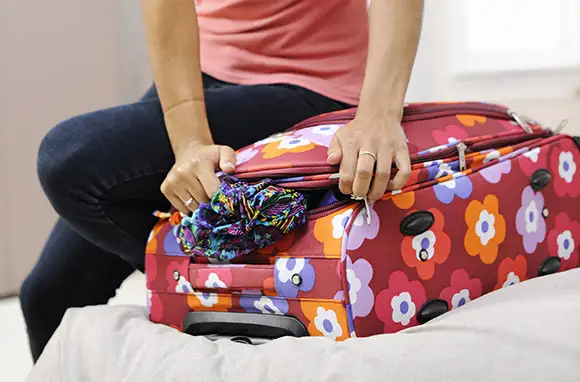
Packing is pivotal. Forget an essential item and you’re left disappointed and scrambling to find the nearest store in your destination. Pack too much and you end up disorganized, burdened with heavy bags, and hemorrhaging money to pay for pricey airline baggage fees. So we thought it best to revisit the most basic—and most useful—packing tips. Here are 10 fundamental packing tips that every traveler should learn.
Image Gallery

Roll, Don't Fold
Many travel experts—including backpackers, who must stuff months' worth of clothing into a pack the size of a box of wine—agree that rolling is superior to folding. Tightly rolled clothes take up less space than folded ones. Plus, they're less prone to getting deep wrinkles from fold creases.

Roll, Don't Fold
Many travel experts—including backpackers, who must stuff months' worth of clothing into a pack the size of a box of wine—agree that rolling is superior to folding. Tightly rolled clothes take up less space than folded ones. Plus, they're less prone to getting deep wrinkles from fold creases.
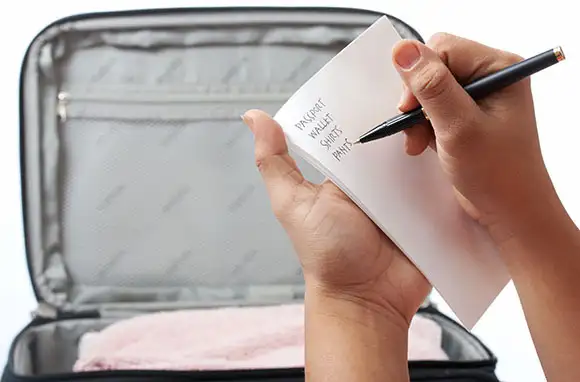
Make a Packing List
When it comes to packing, procrastinators fall short. Start your packing process days or even weeks ahead of your departure date; this gives you time to craft a complete list, plus purchase any additional items you might need for your vacation. Creating a packing list is a fail-safe way to ensure that you never, ever forget to bring something important.
Use our Carry-On Bag Packing List and our Essential Beach Packing List to build an inventory of the things you'll need for your trip. Our sister site IndependentTraveler.com also has a useful, comprehensive packing list.

Know Your Airline's Baggage-Fee Policy
Figuring out the airlines' tricky and befuddling baggage-fee policies is key to any budget-minded packing strategy. While most airlines permit travelers to check at least one bag on international flights, the majority of U.S. carriers charge big bucks for bags checked on domestic flights. Spirit Airlines—that notoriously customer-unfriendly discounter—even charges as much as $100 for carry-on bags.
Before you begin packing, take a peek at your airline's website and read its baggage policy. This is something you might even want to do prior to buying your plane ticket, especially if you're set on bringing a checked bag or two. Consider flying on Southwest or JetBlue, both of which permit at least one free checked bag on domestic flights.

Follow The 3-1-1 Rule
What happens if you don't follow the Transportation Security Administration's (TSA) 3-1-1 rule for carry-on luggage? Attempt to bring a large bottle of shampoo or a full-size gel deodorant through the security line and the TSA will likely confiscate your stuff, holding you up in line in the process. So get familiar with the agency's rules: All liquids brought onto planes must be in 3.4-ounce bottles or smaller and inside a single, clear, quart-size zip-top bag.
It also helps to know which items are, according to the TSA, considered liquids or gels and thereby subject to the 3-1-1 rule. This isn't as simple as it sounds. Foods such as peanut butter, pudding, mashed potatoes, and icing are classified as gels. Mascara, lip gloss, and aerosol items are also classified as liquids or gels. But keep in mind that liquid prescription medication is exempt. (Read more on that on The TSA Blog.) See a more complete list of liquids and gels that are not permitted in carry-on luggage in quantities greater than 3.4 ounces here.
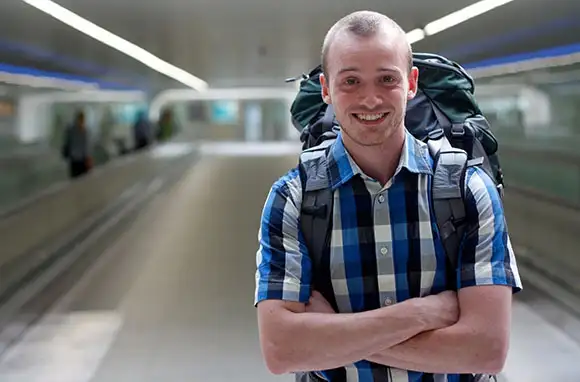
Use Your Personal Item Wisely
It's standard for airlines to permit each traveler to bring one carry-on bag and one personal item onboard planes. This personal item is subject to specific size requirements (these vary by airline), but something like a purse, laptop bag, or backpack is generally acceptable.
In Five Tips for Fitting it All in a Carry-on Bag, Caroline Morse advises travelers to leverage their personal-item allowance, suggesting, "Forget wasting my personal-item allowance with a tiny purse. I'll bring a larger tote bag that I can stash under the seat but will still give me extra storage space. This will come in handy for keeping all of the things I'll need to be on hand during the flight within arms' reach as well."

Wash Your Clothes on the Road
Laundry facilities are one of my favorite parts about staying in vacation rentals. If you know your accommodations will have free laundry facilities, you're golden. You can wash and wear just a handful of outfits for the duration of even very long trips.
If you're staying in a hotel, call in advance to see if laundry services are available and how much they cost. Travelers staying in properties without laundry facilities or taking cruises—cruise lines are notorious for charging an arm and a pant leg for laundry services—can wash clothes in sinks and hang them to dry. I always make sure to pack a travel-size packet of laundry detergent and a sink stopper to clean my clothes on the road—it's my secret for fitting everything in a carry-on bag. Portable laundry-drying lines that attach to showers via suction cups are also a good choice; you can find them at many travel-supply stores.
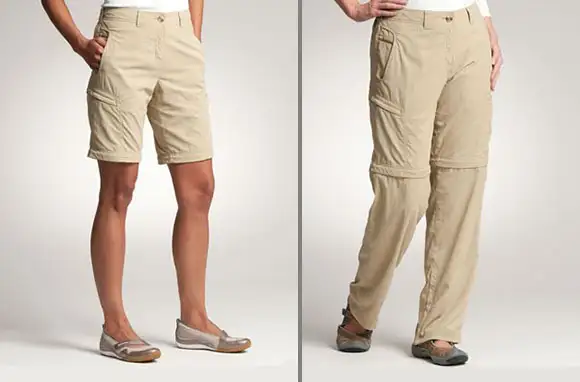
Pack Dual-Purpose Garments
If it's two-in-one, it's one less thing to pack. Dual-purpose items, such as pants that turn into shorts or a jacket that turns into a travel pillow (see these items here) are worth their weight in airline baggage fees.

Layer
This advice is twofold: Wear layers and pack in layers. First, your on-the-road wardrobe should feature plenty of layers, which will help you jetset through multiple climates in style and comfort. Second, the items in your bag should be packed in neat layers for easy screening. According to the TSA, "Pack items in layers (shoes one layer, clothes one layer, electronics one layer, etc.)" so that the security agent screening your bag can get a clear picture of what's inside. The faster the TSA agent can screen your stuff, the faster you'll get through the security line.
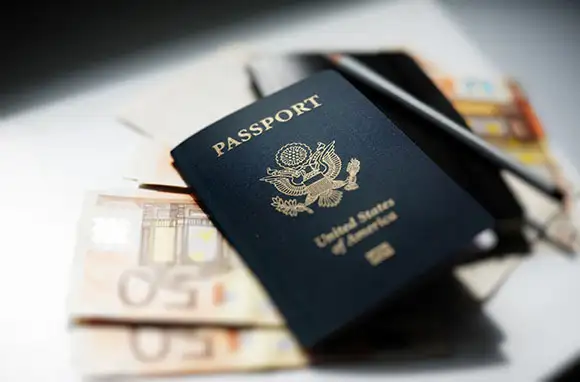
Never Check Essential Items
It's terribly important to keep your valuable and essential belongings in your carry-on bag, not in your checked luggage. Your passport, identification, money, credit cards, jewelry, electronics, and other valuables should always be brought onto the plane with you. We probably don't need to tell you why you need to keep your passport and wallet on your person. But if the airline loses your luggage (or if a TSA agent gets sticky fingers), you'll regret stowing your expensive watch in a checked bag.

Use Packing Aids
My all-time favorite packing aid: Eagle Creek Compression Sacs. Use them to shrivel your clothes into a vacuum-packed, tiny, tight bundle that takes up minimal suitcase space. Other packing aids that can help you organize better and fit more into your bag include packing envelopes and packing cubes. Get more ideas in Carry-on Packing Made Easy.
More from SmarterTravel:
- Packing Ideas So Crazy They Just Might Work
- Five Tips for Fitting it All in a Carry-on Bag
- 7 Ways to Avoid Baggage Fees
We hand-pick everything we recommend and select items through testing and reviews. Some products are sent to us free of charge with no incentive to offer a favorable review. We offer our unbiased opinions and do not accept compensation to review products. All items are in stock and prices are accurate at the time of publication. If you buy something through our links, we may earn a commission.
Related
Top Fares From
Today's Top Travel Deals
Brought to you by ShermansTravel
Greece: 9-Night Vacation, Incl. Meteora &...
Exoticca
 vacation
$2099+
vacation
$2099+
New Year Sale: Luxe, 9-Nt Alaska...
Oceania Cruises
 cruise
$3599+
cruise
$3599+
Ohio: Daily Car Rentals from Cincinnati
85OFF.com
 Car Rental
$19+
Car Rental
$19+



